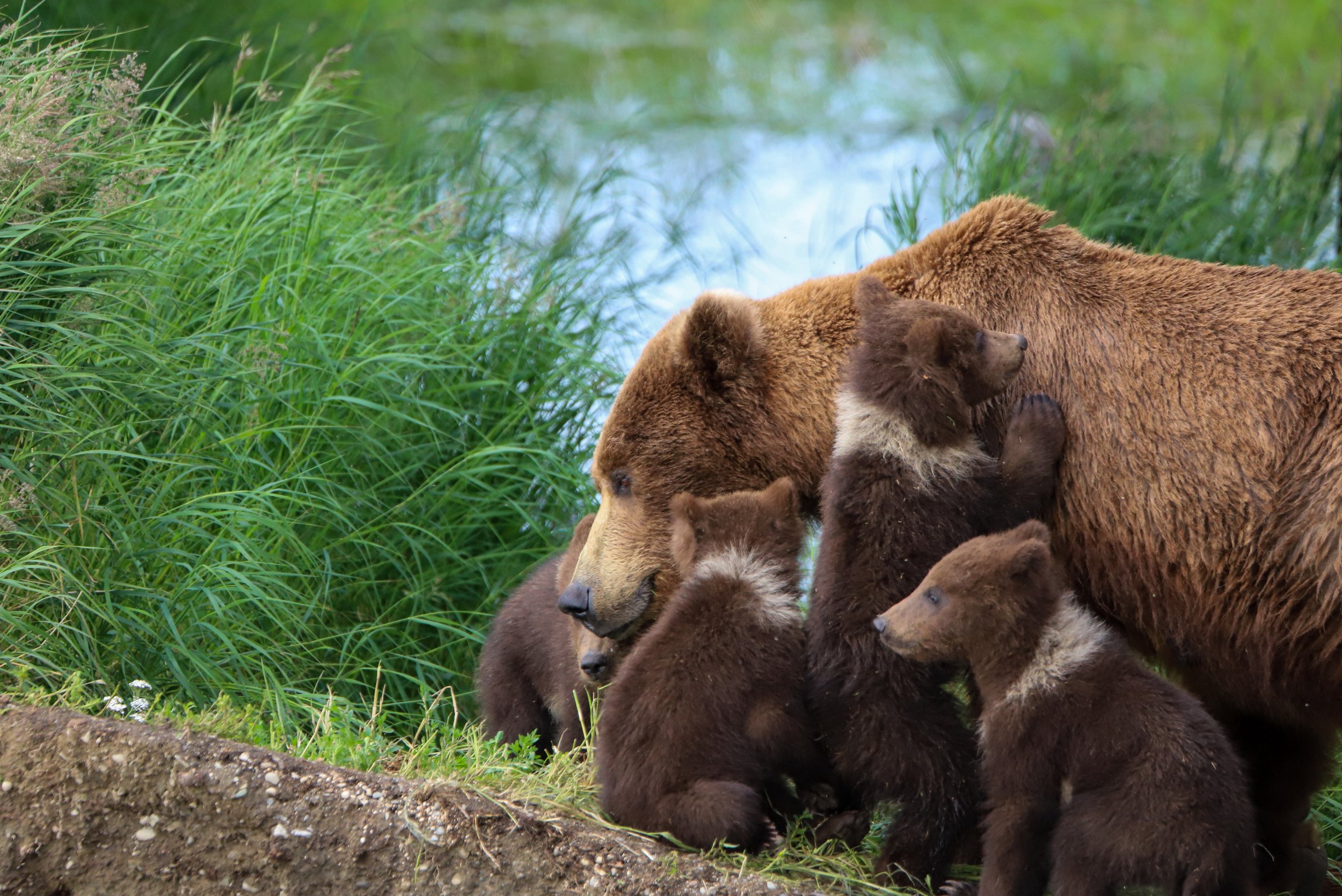
Know the Difference
Black bears and grizzly bears are difficult to differentiate based on size and color. And other characteristics such as diet, behavior, and habitat use are even less reliable because black bears and grizzlies eat similar food, display similar behaviors, and occupy much of the same areas in some provinces and states.
Knowing the species of bear you’re looking at can be key. Every year, black bear hunters kill several grizzly bears by mistake, which can have significant impacts on local grizzly bear populations.
Looking at a combination of features—including color, size, face profile, ear shape, and the presence or lack of a shoulder hump—is best when trying to identify a bear. Tracks also give some key clues as to the species of bear. Read on to find out more about the differences between each of these characteristics.
Color
Despite the names grizzly and black, coat color is the least reliable characteristic for identifying bears. Not all black bears are black, and not all grizzlies are grizzled. Grizzlies may be a luminous blond, reddish blond, light brown, darker brown, or almost black. To add to the confusion, the common name grizzly is derived from the term “grizzled,” which refers to white-tipped hair. Grizzled hair occurs mainly on the back and shoulders; thus, from a distance, a grizzly bear appears to have darker legs and lighter upper parts. And to complicate matters just a bit more, black bears, despite their name, are not always black. They can also be brown, cinnamon, blond, or a combination of light and dark hair. Kermode bears (also called spirit or ghost bears), found in Northwestern British Columbia, Canada, are a subspecies of black bear that are white due to a recessive gene.
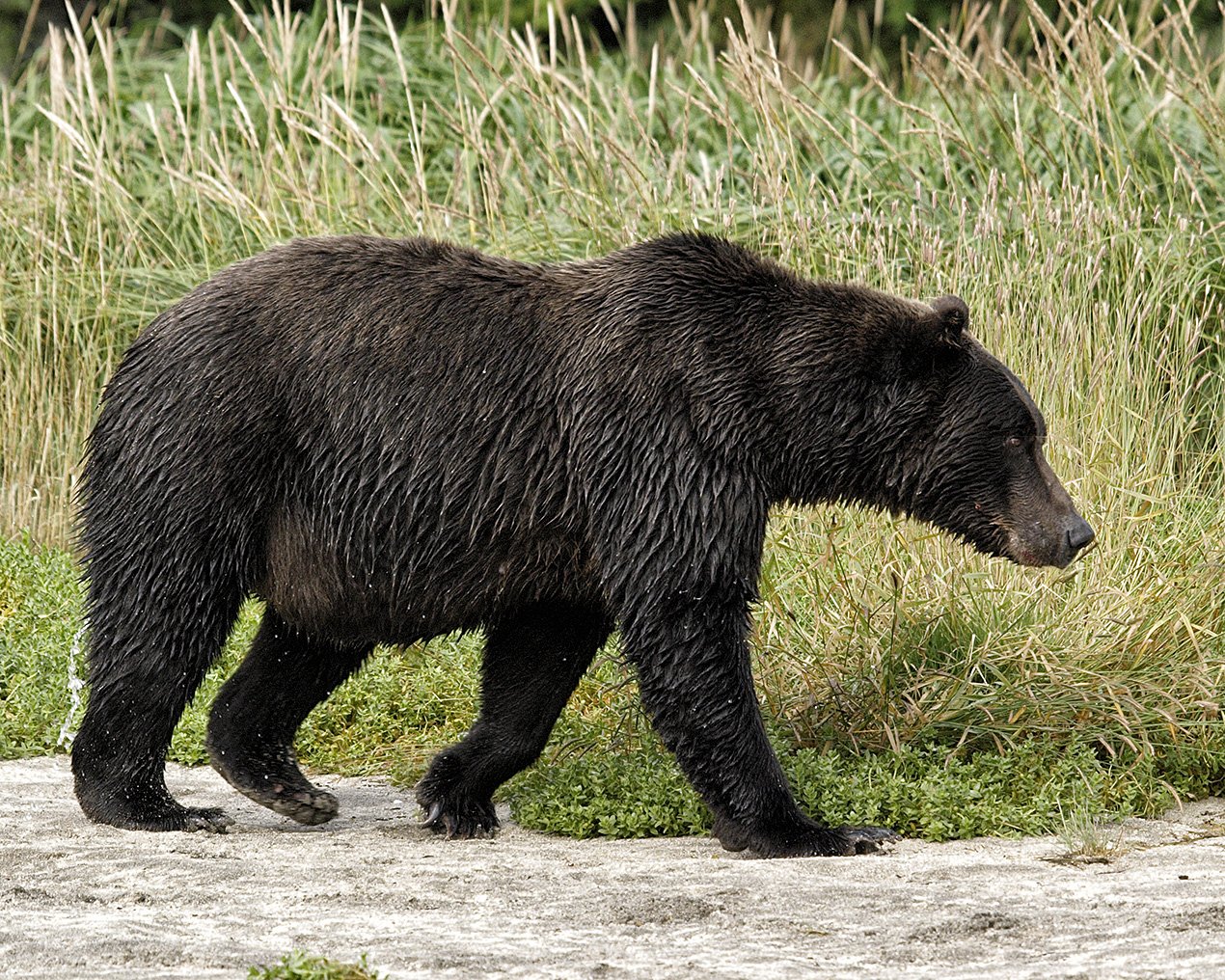
A dark-coloured grizzly bear
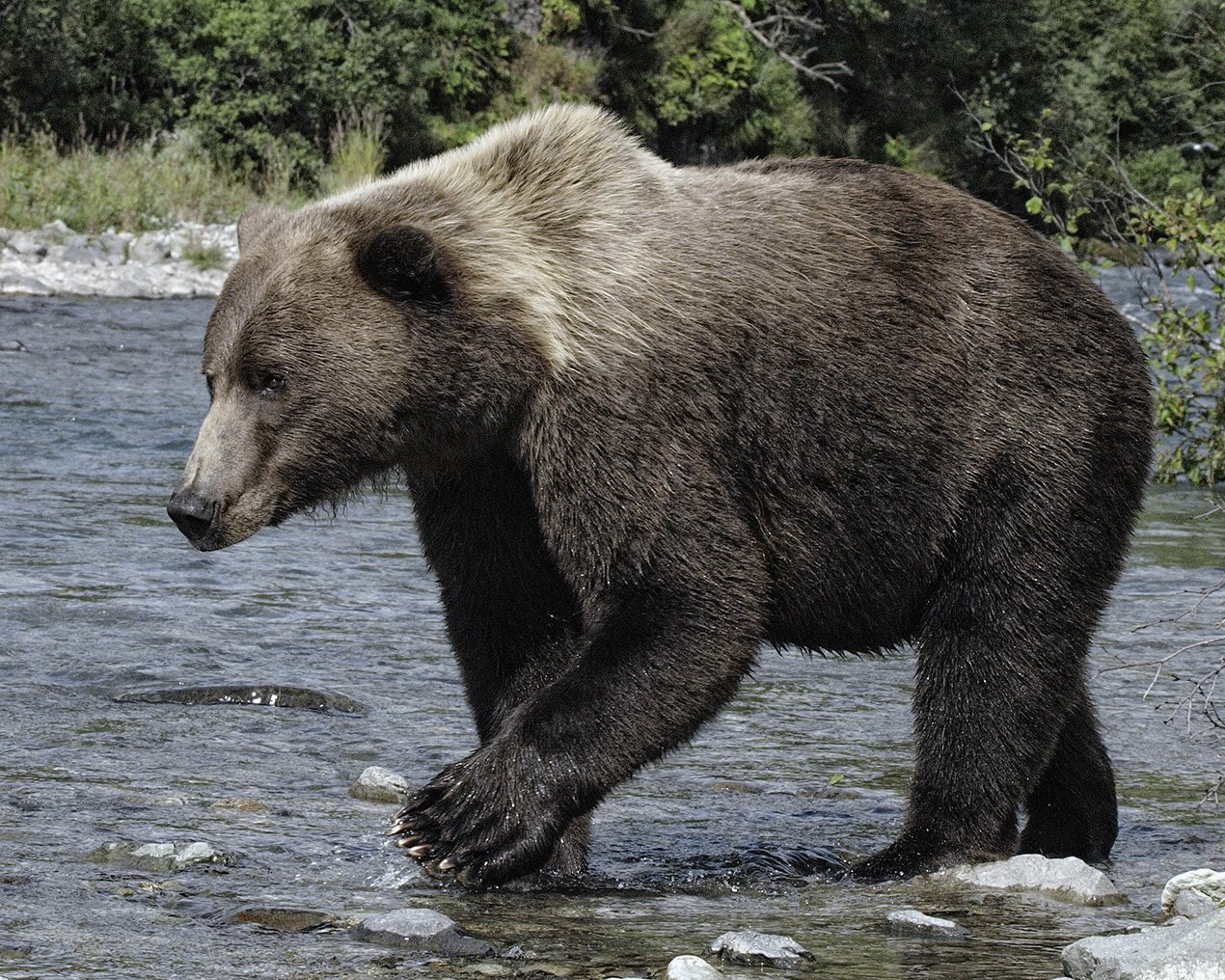
Typical grizzly coat with a lighter collar
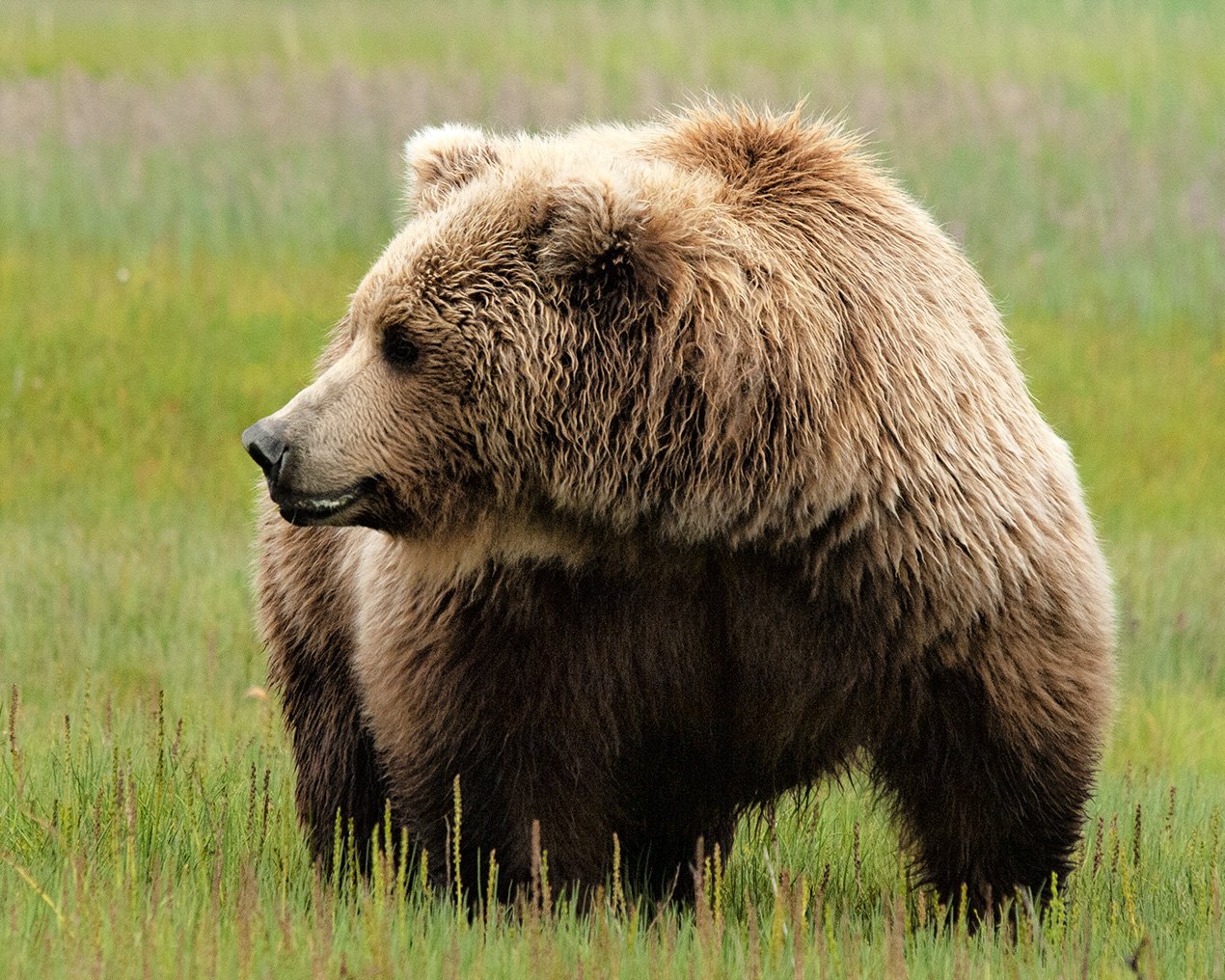
A lighter coloured grizzly coat
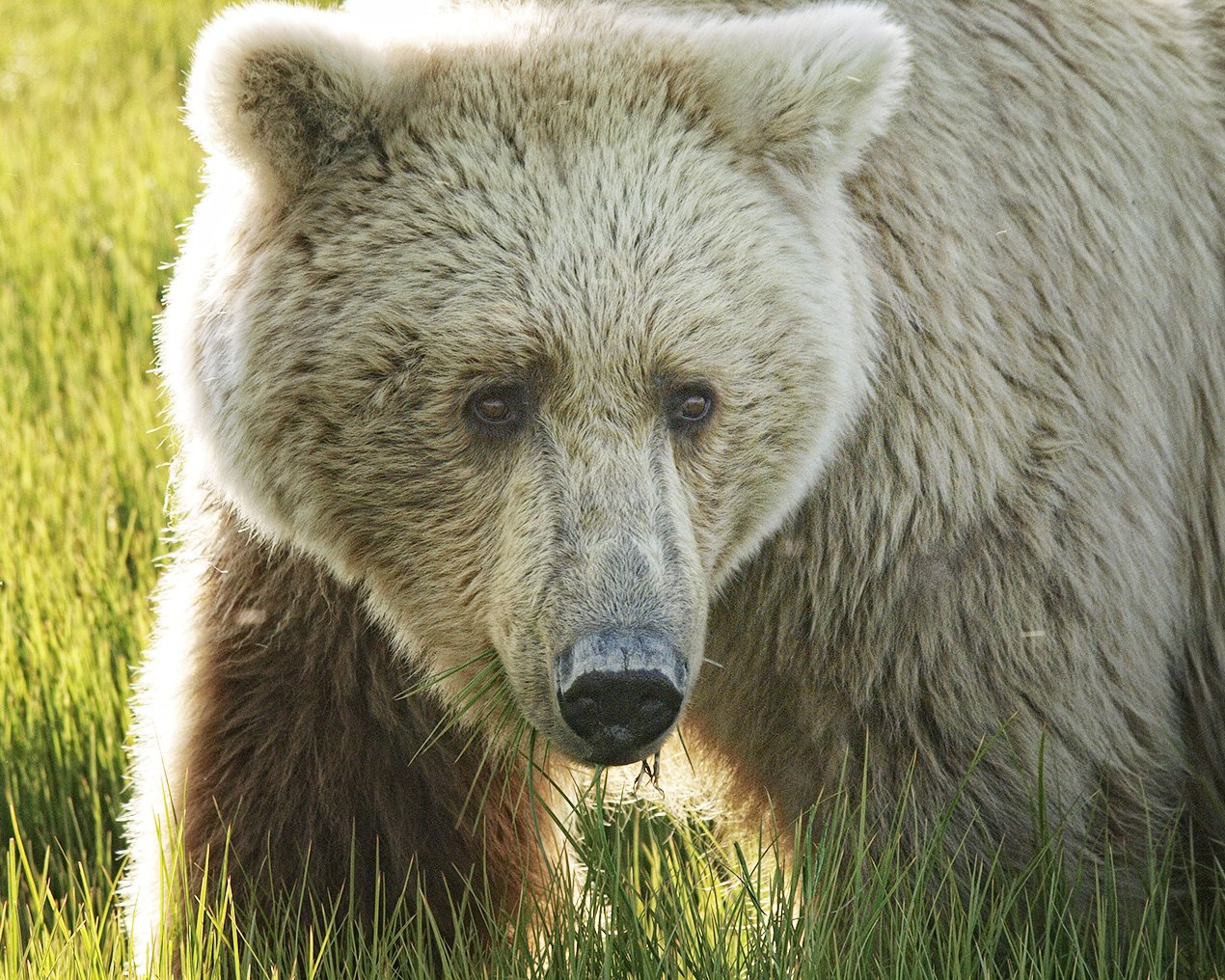
A blonde grizzly
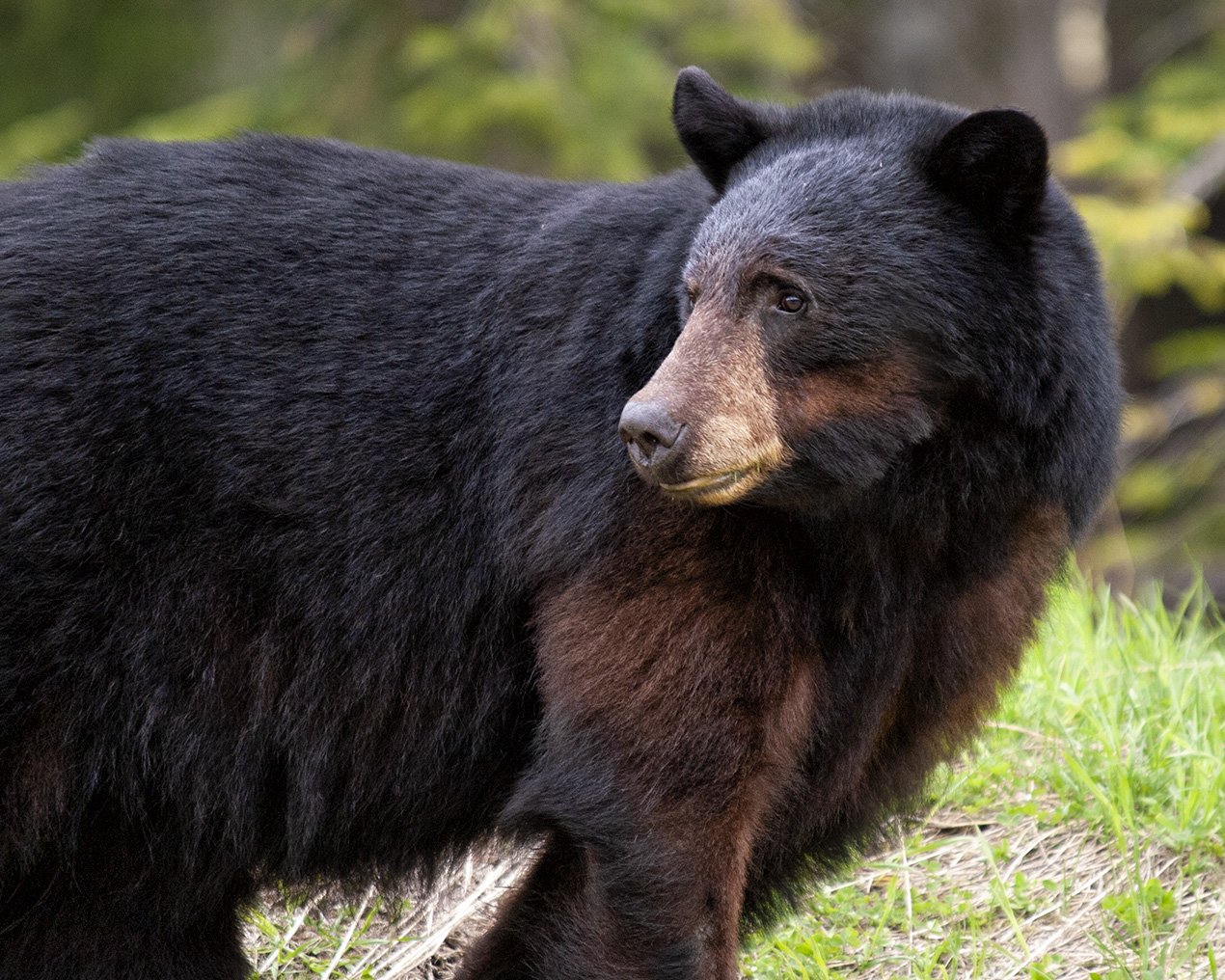
A black bear with a patchy coat
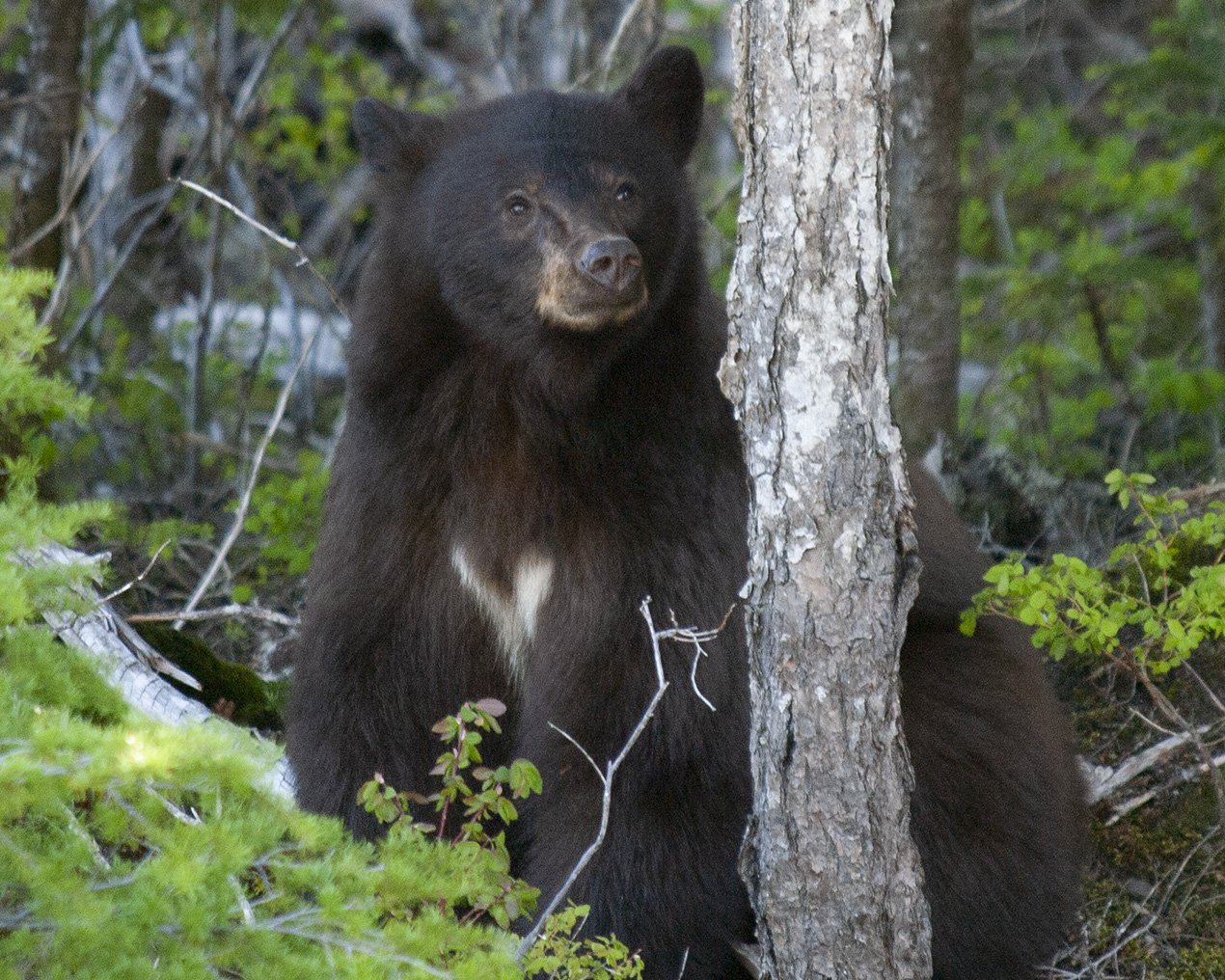
A brown-phase black bear with a white chest patch
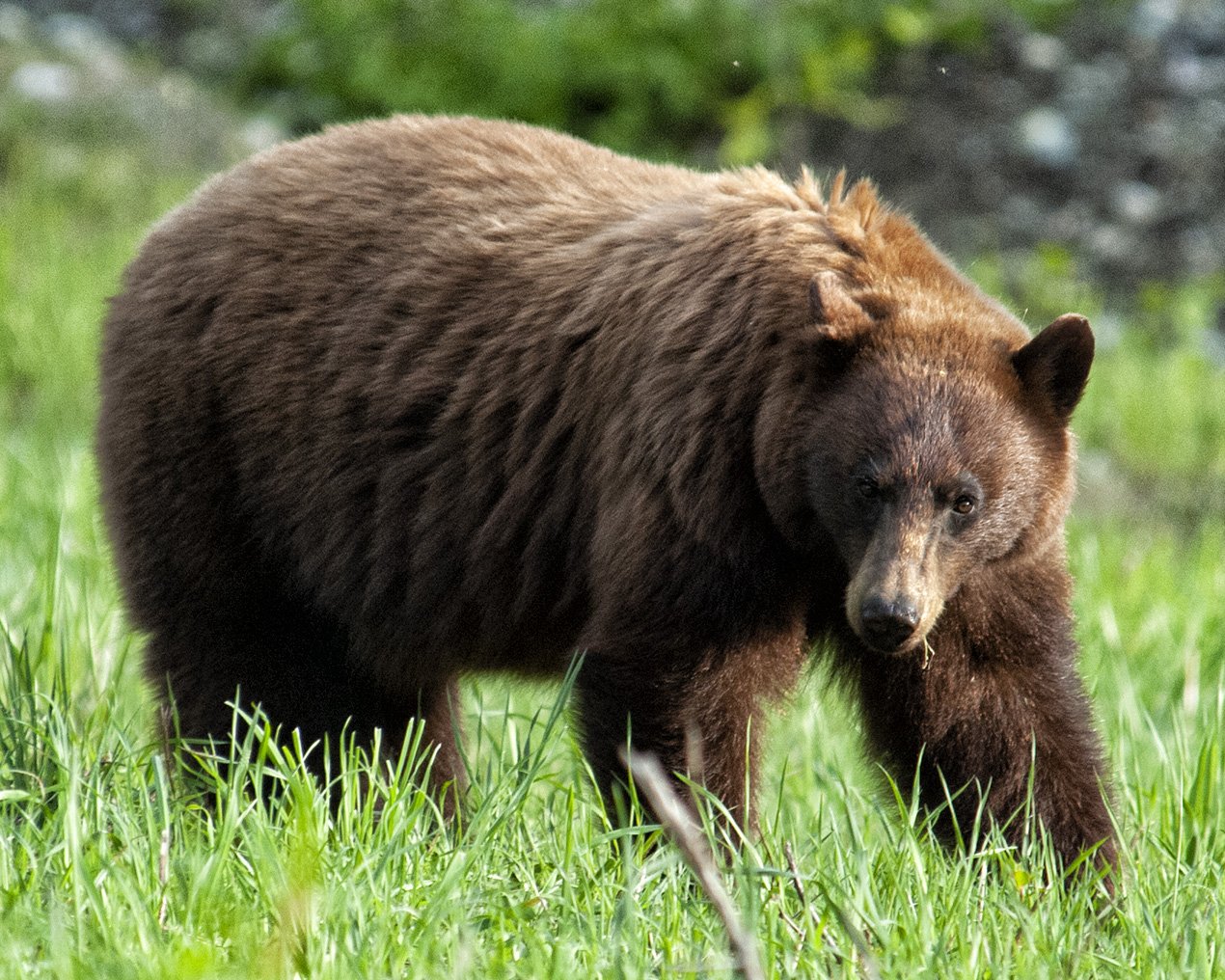
A cinnamon black bear with fuzzy coat
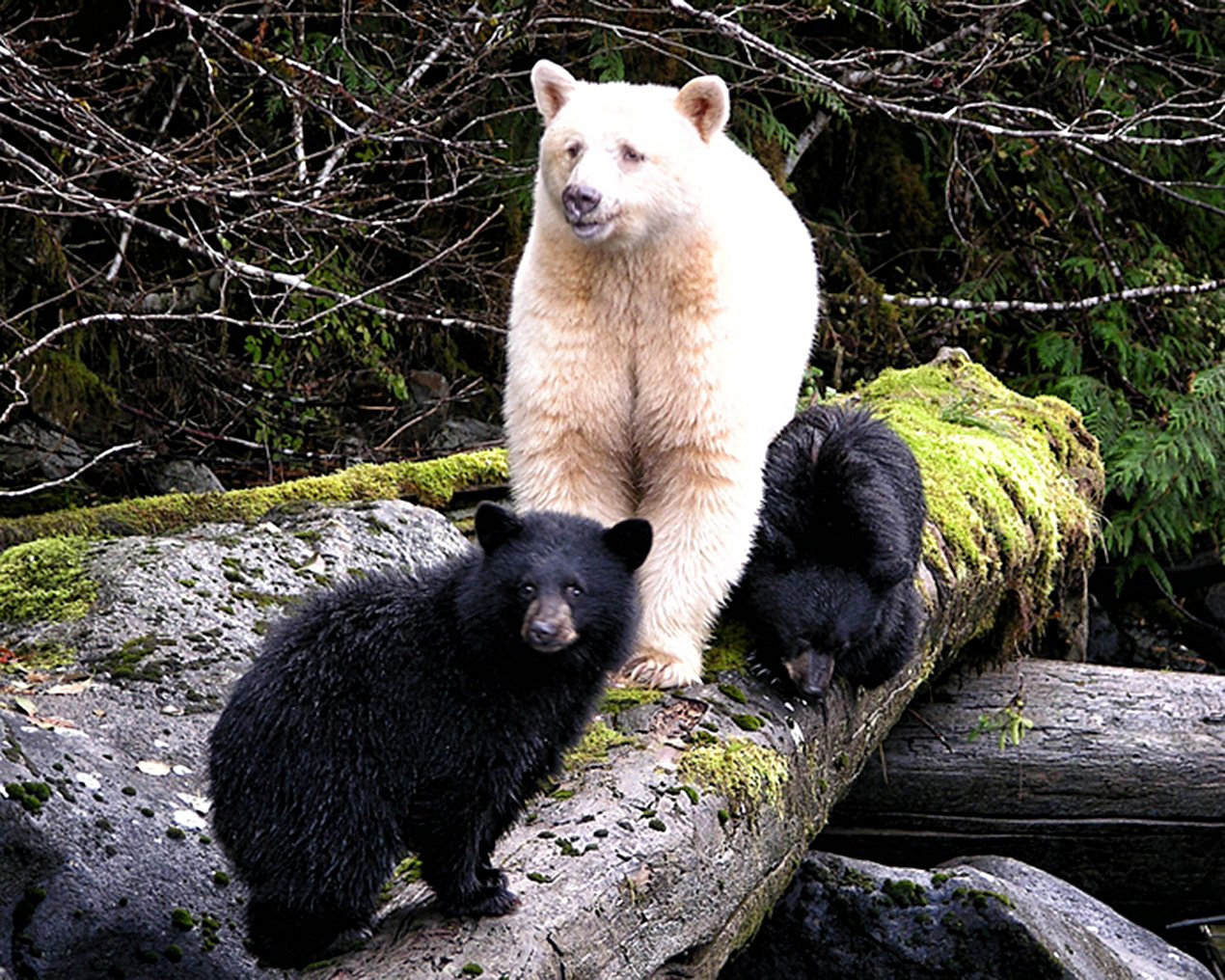
A Kermode bear with black cubs
Size
Just like color, body size is also not a reliable indicator for identifying bears. Most people tend to overestimate the weight and size of bears. While grizzly bears are, on average, larger than black bears, size can depend on sex and age. A typical adult female grizzly weighs 200-350 pounds and adult males weigh 300-650 pounds. An adult black bear, which can easily weigh 200-300 pounds, may not only weigh the same as a female grizzly but also be about the same height (3–3.5 feet at the shoulder). Then too, an adult male black bear will be much heavier and taller than a young grizzly. And just in case it isn’t difficult enough yet, try to imagine yourself distinguishing a juvenile dark-haired grizzly from an adult cinnamon-colored black bear in the dim light of an early morning or the long dusky shadows of an early fall evening.
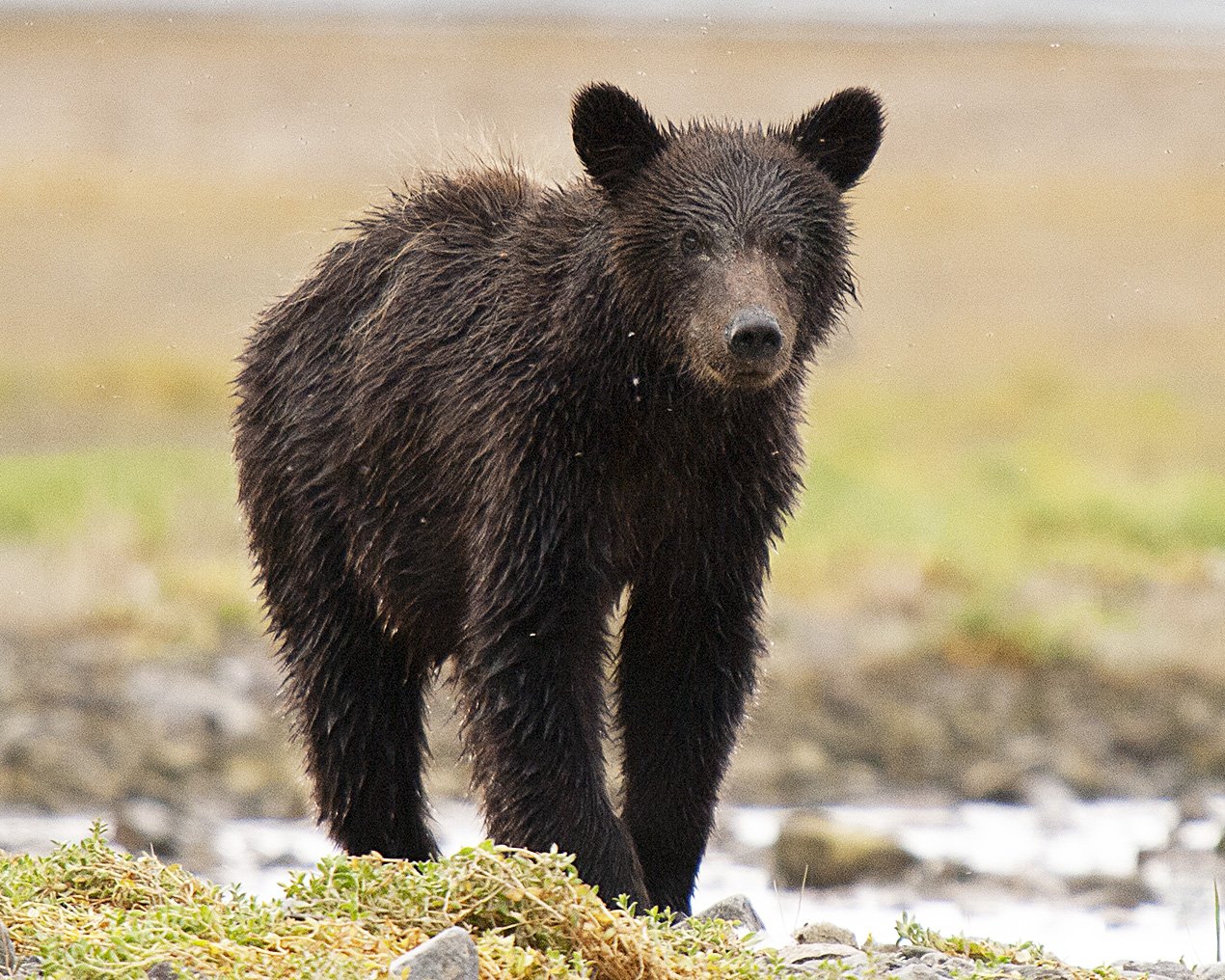
A young grizzly that is much smaller than an adult black bear
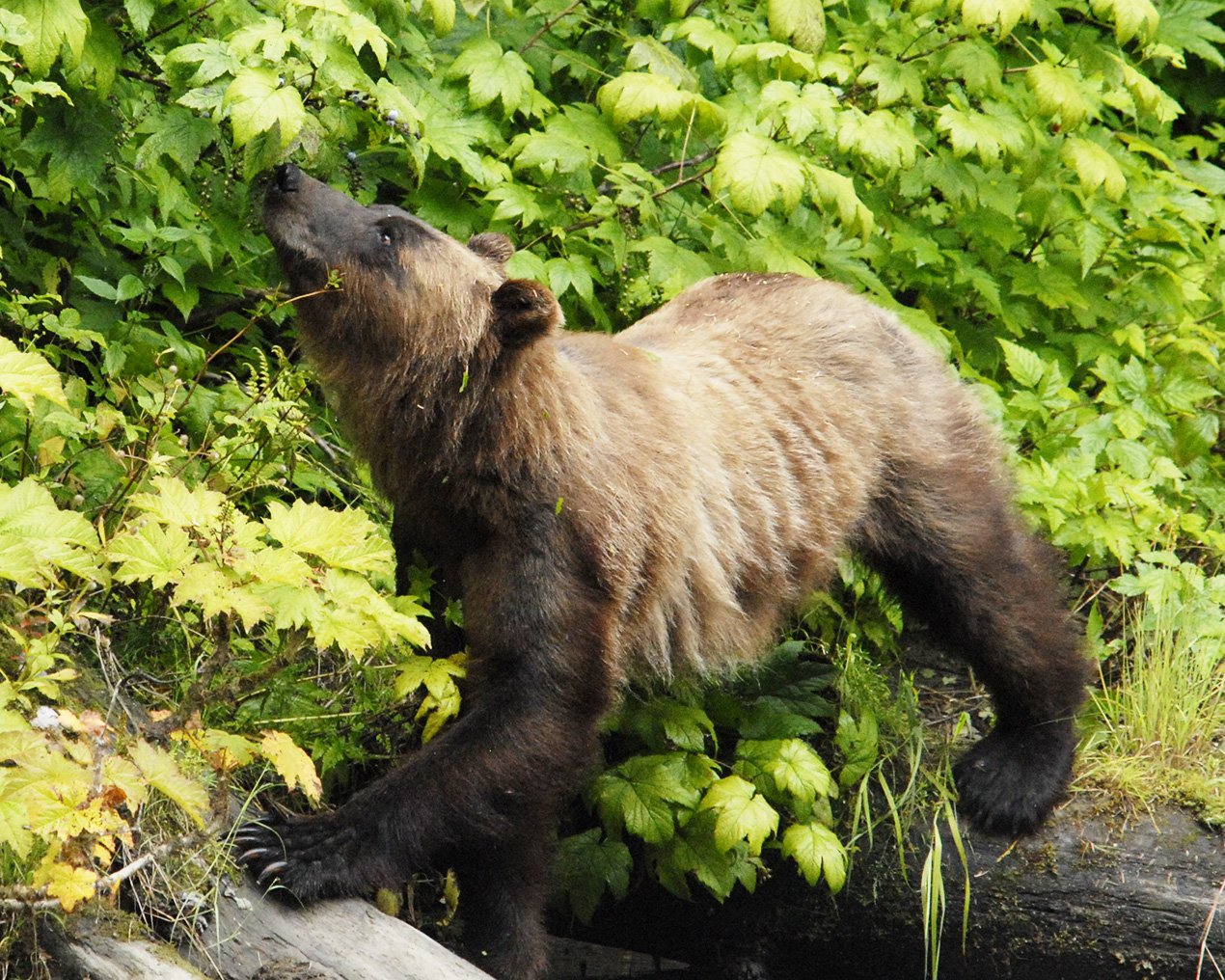
A sub-adult (adolescent) grizzly bear who is smaller than most adult black bears
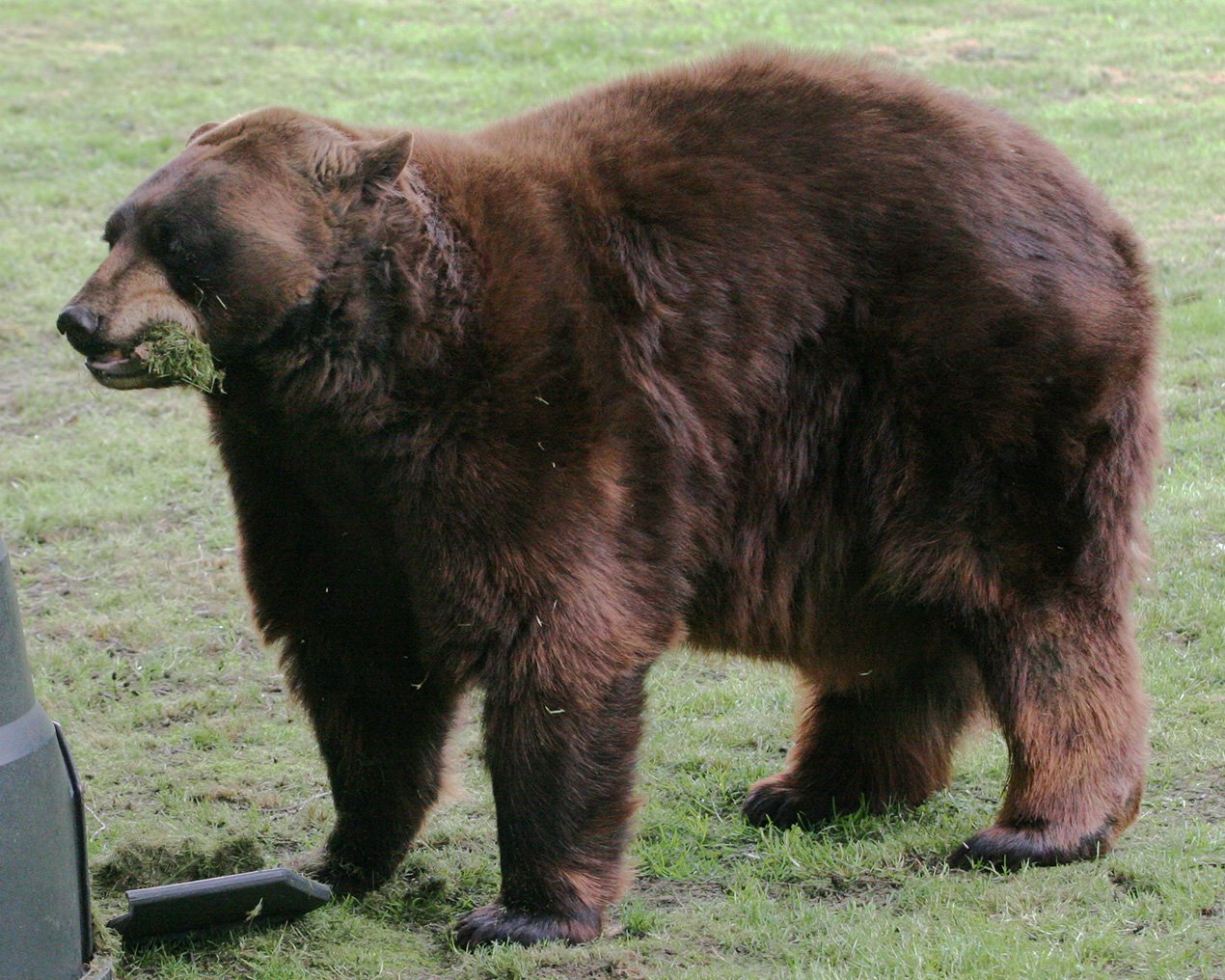
A large black bear who is bigger than some female or young grizzlies
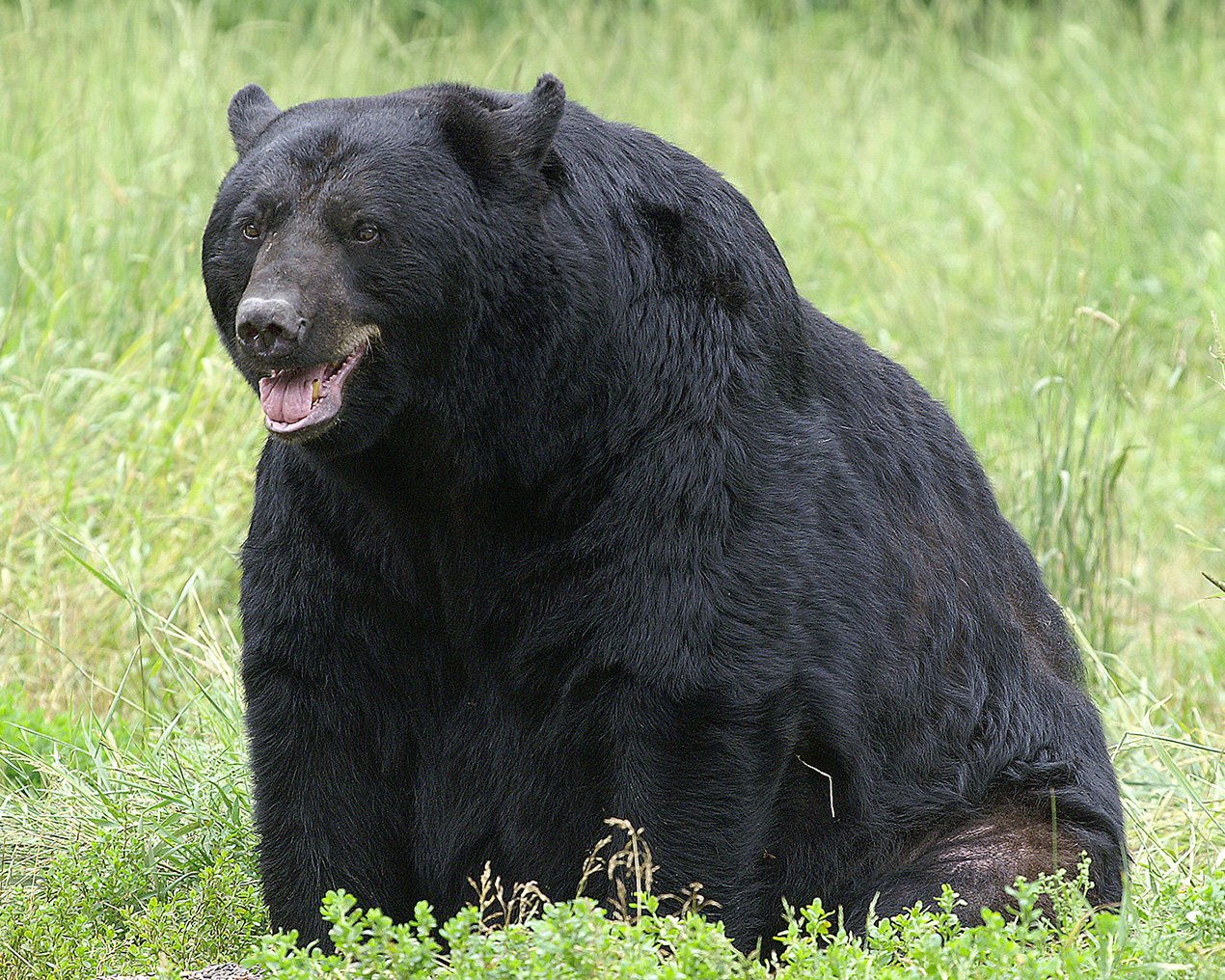
A very heavy black bear that is larger than some grizzlies
Rump or Shoulder Hump
Grizzly bears have well-developed shoulder muscles for digging and turning over rocks. These muscles appear as a prominent shoulder hump between the front shoulders, which is visible in profile. The shoulder hump is the highest point on a grizzly’s body. Black bears have no shoulder hump. When standing on flat ground on all fours, a black bear’s highest point is the middle of the back or the rear. Distinguishing if a bear has a shoulder hump or higher rump can become more complicated depending on a bear’s position. For example, if a black bear’s head is down, its shoulder blades may look more prominent and can be confused with a hump. Or if a black bear is standing on a slope, its rump may appear more even or lower in relation to the rest of its body.
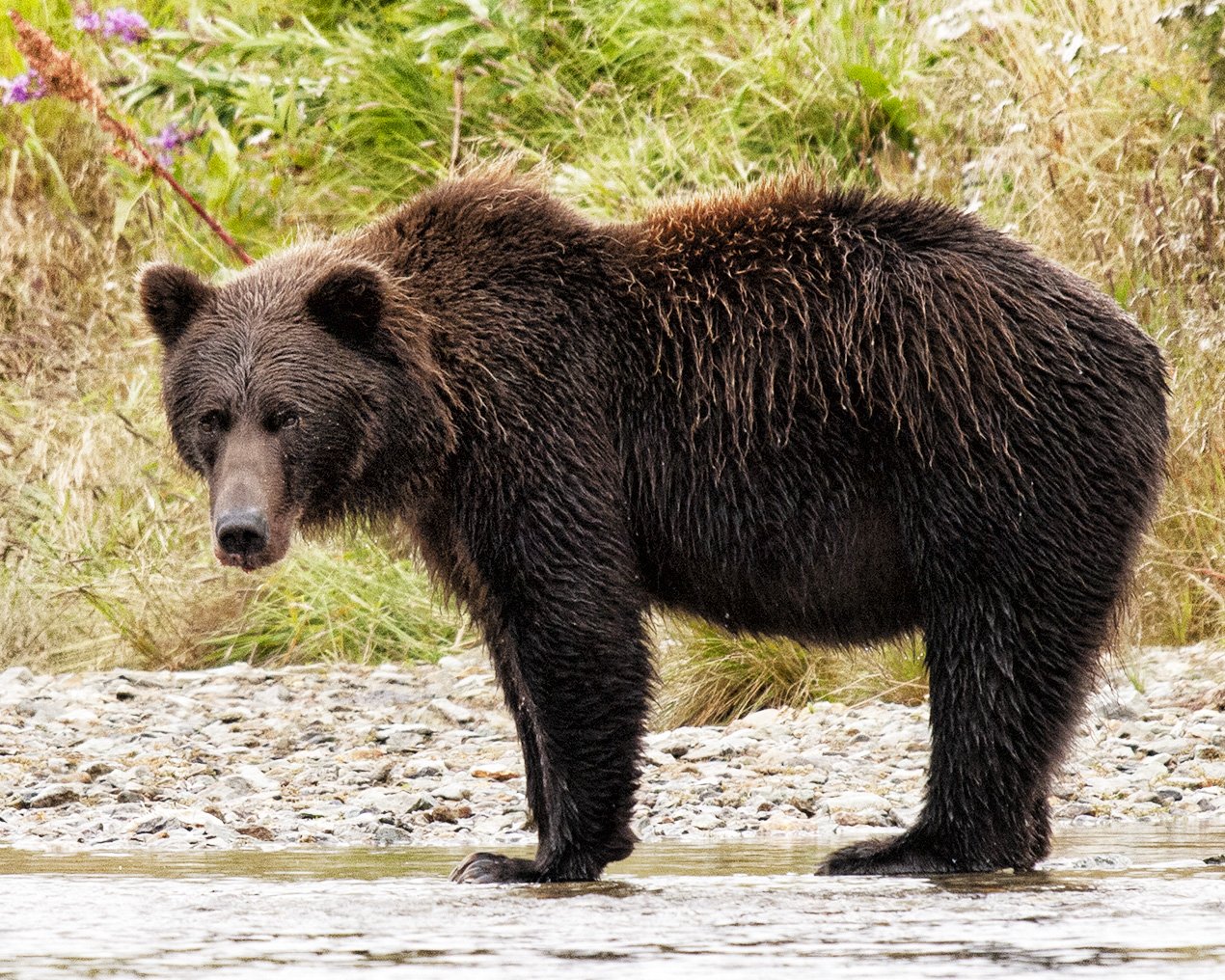
A grizzly bear, with a prominent shoulder hump
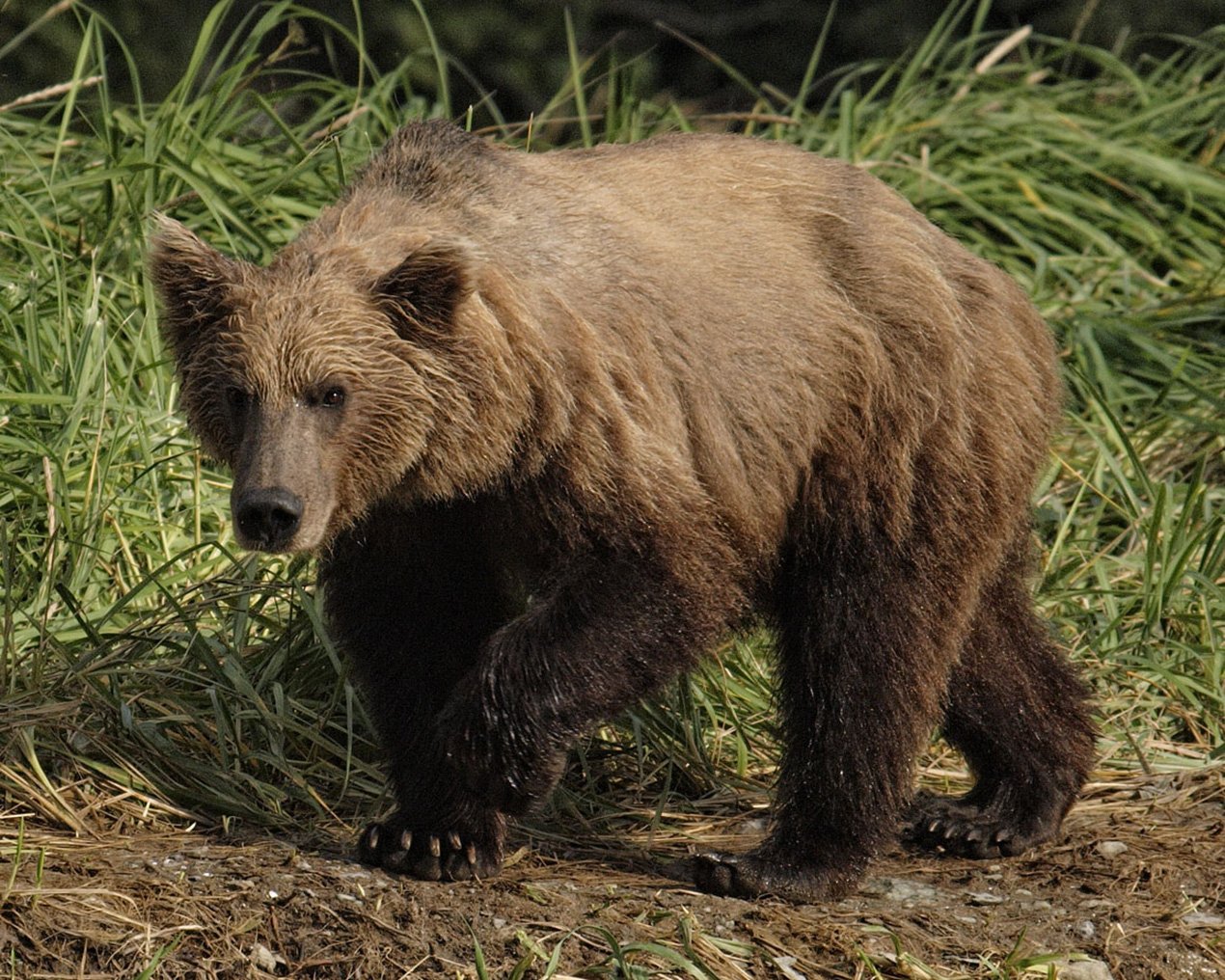
A grizzly bear with a less prominent shoulder hump, which still appears as the highest point on its body

A black bear that has no shoulder hump, but wind blowing up shoulder fur
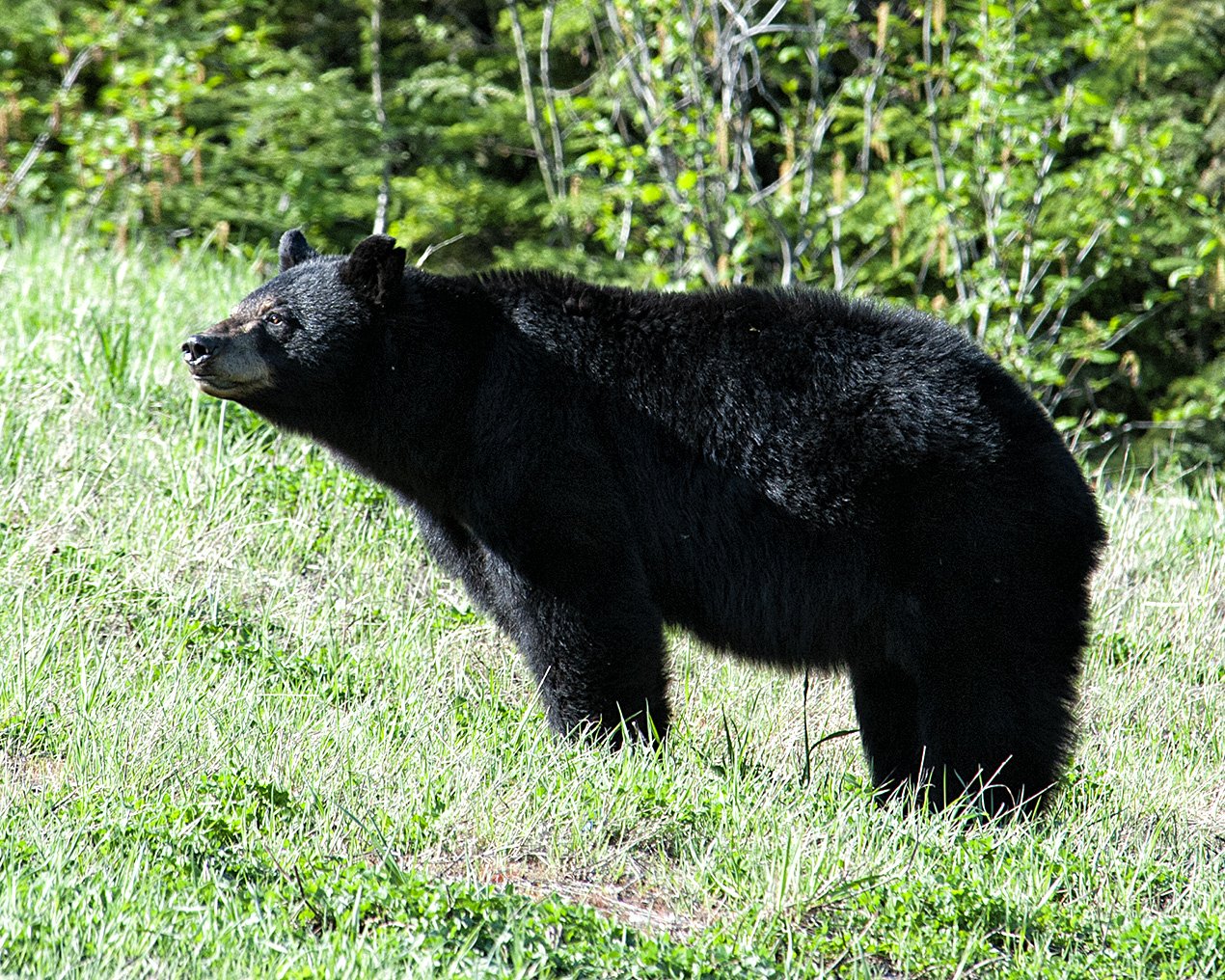
A black bear standing on a slope, making its rump less prominent as being the highest point of its body
Face Profile
A grizzly typically has a concave or dish-shaped profile that extends from between its eyes to the end of its nose. A black bear normally has a fairly straight profile from forehead to nose tip. A grizzly’s muzzle is broader and more prominent; their eyes appear closer together and deeper set. Black bears look more dog-like and have flatter, shorter fur. Grizzlies appear to have longer, fuzzier looking fur, especially on the face.
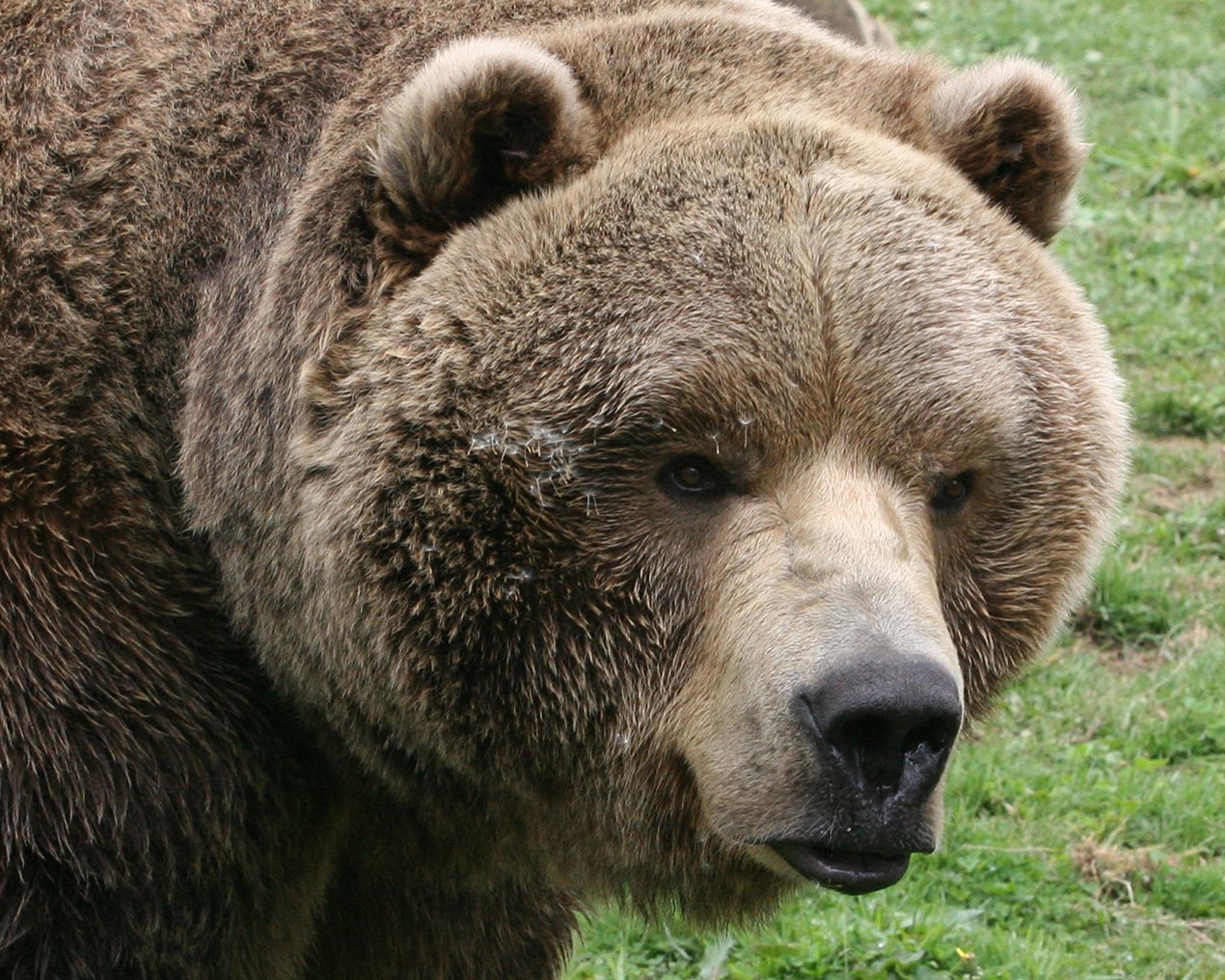
A grizzly bear, showing a prominent snout with a blunt tip and deep set eyes
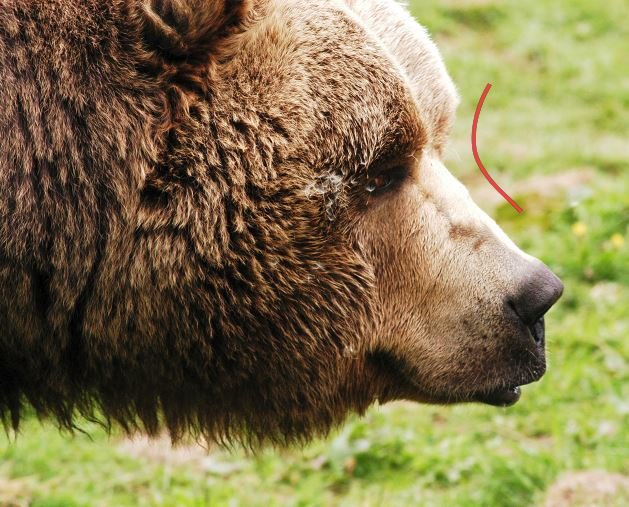
A grizzly bear's dish-shaped side profile
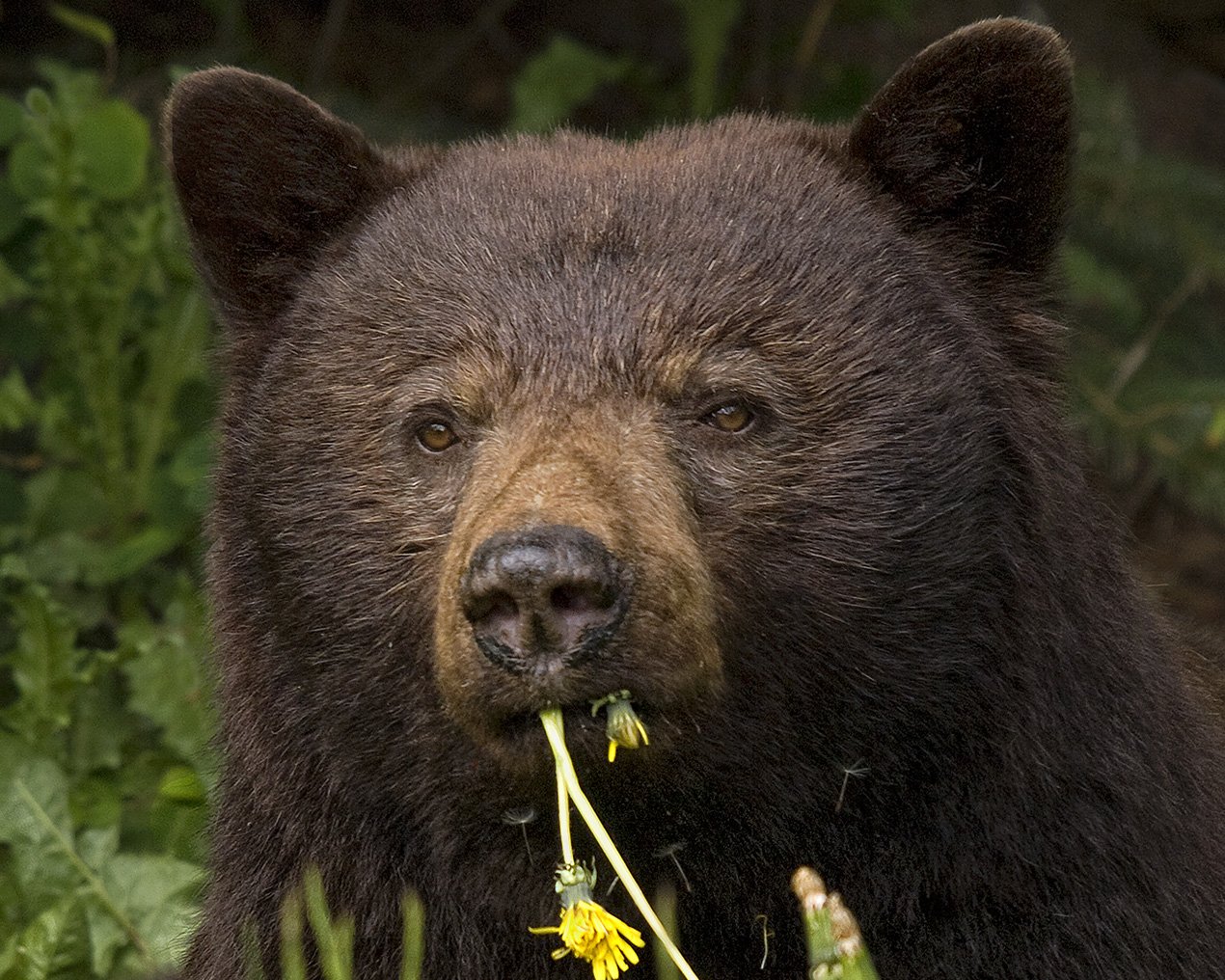
A black bear, showing eyes set further apart and a less prominent snout
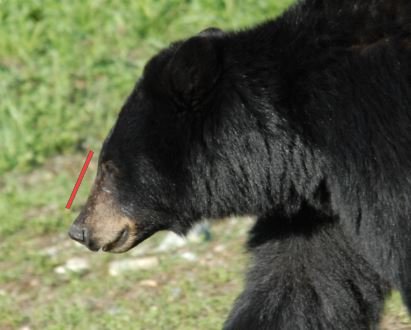
A black bear, showing a straight facial profile
Ear Shape
Grizzly bears have smaller, more rounded ears (in proportion to their head size). They also look fuzzier because of their longer fur. A black bear’s ears appear larger, longer, more erect, and pointed. As seen below, the angle at which you look at a bear can make its ears appear to change shape or size. If a grizzly bear has been swimming, its ears will appear bigger relative to its wet head.
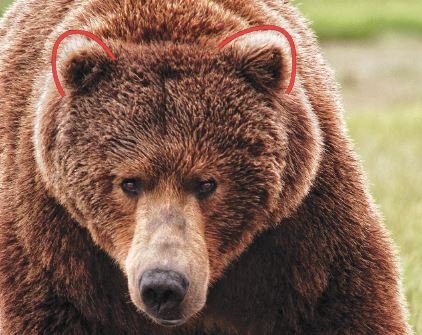
A grizzly bear, showing typical rounded ears
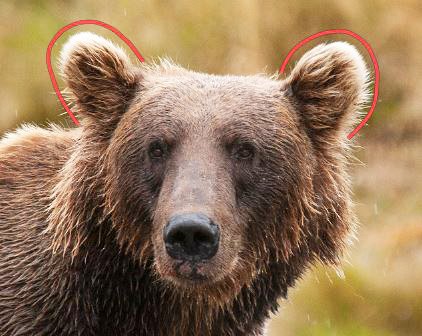
A grizzly bear with wet fur, and therefore, larger looking ears
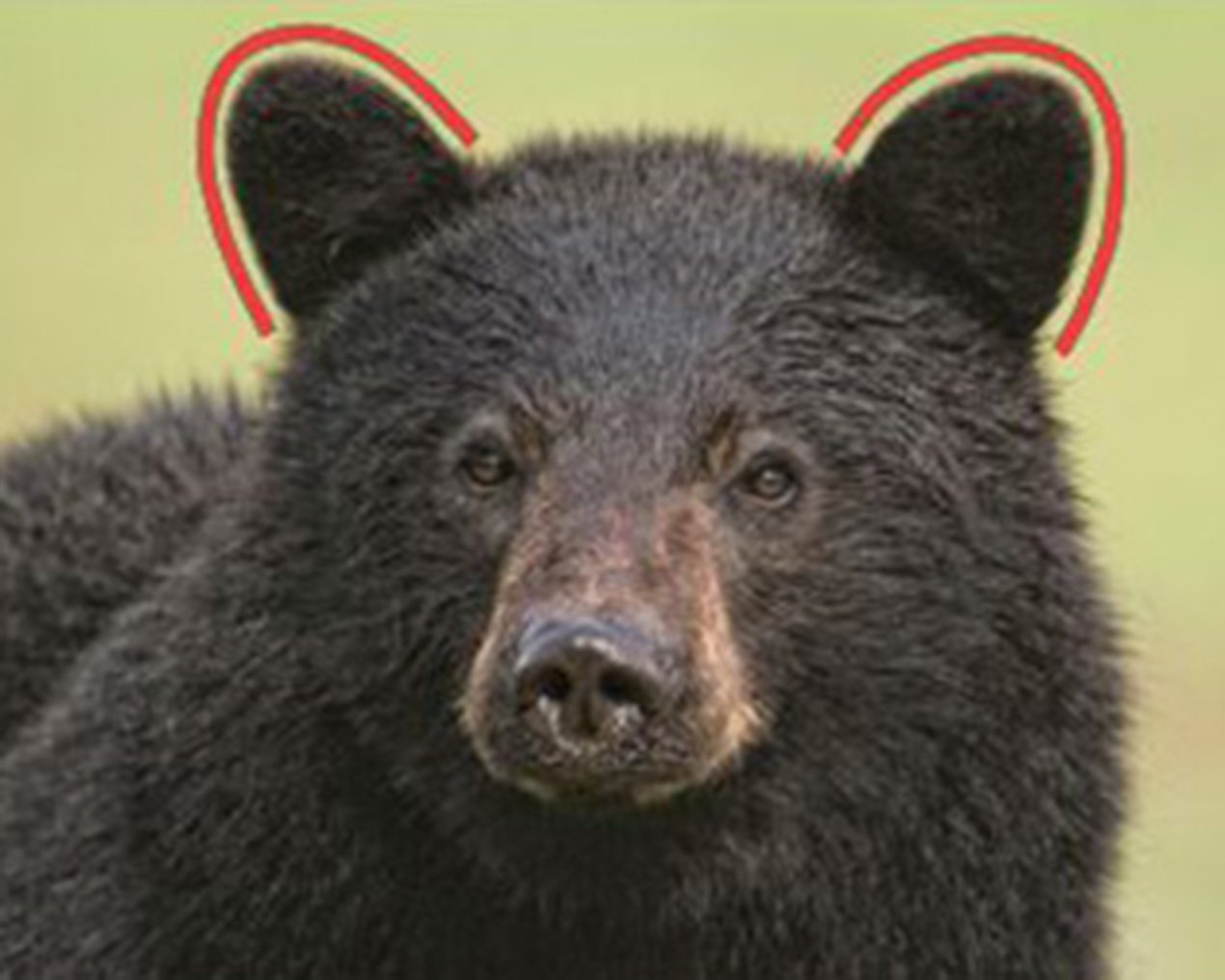
A black bear, showing typical ears
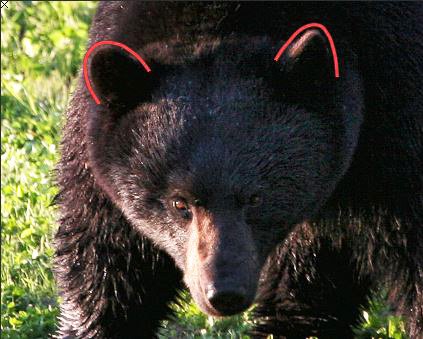
A black bear with smaller looking ears due to the viewing angle
Claws
Claws on the front paws are also a good way to differentiate a grizzly from a black bear. Grizzly bears have gently curved, often light-colored, two- to four-inch-long claws adapted for digging roots and excavating a winter den or small prey. The claws of an adult grizzly can be longer than a person’s finger. Black bears have shorter, more sharply curved, dark claws that are often less than two inches long. These claws are well adapted for climbing trees and tearing into rotten logs in search of insects.
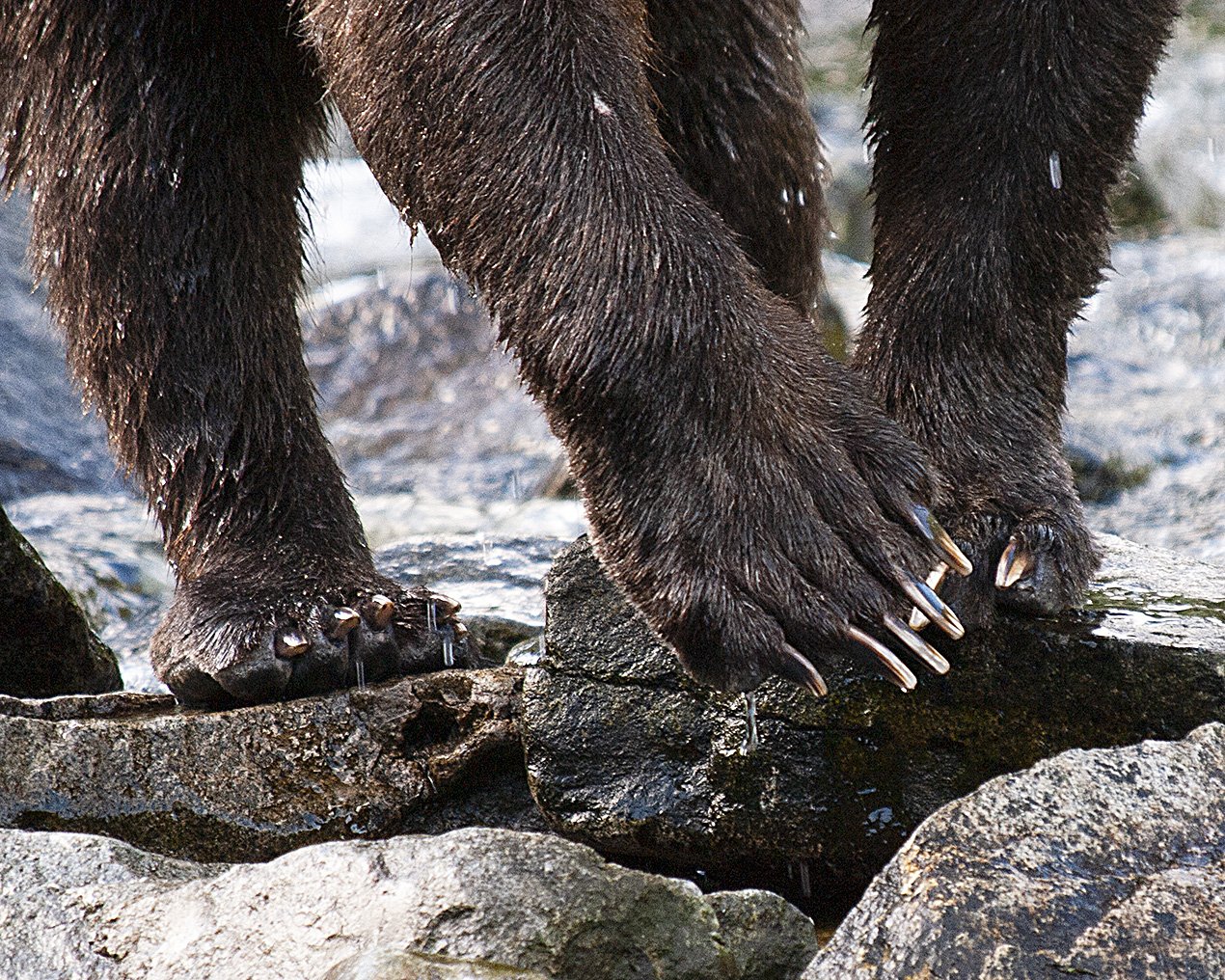
Grizzly bear claws
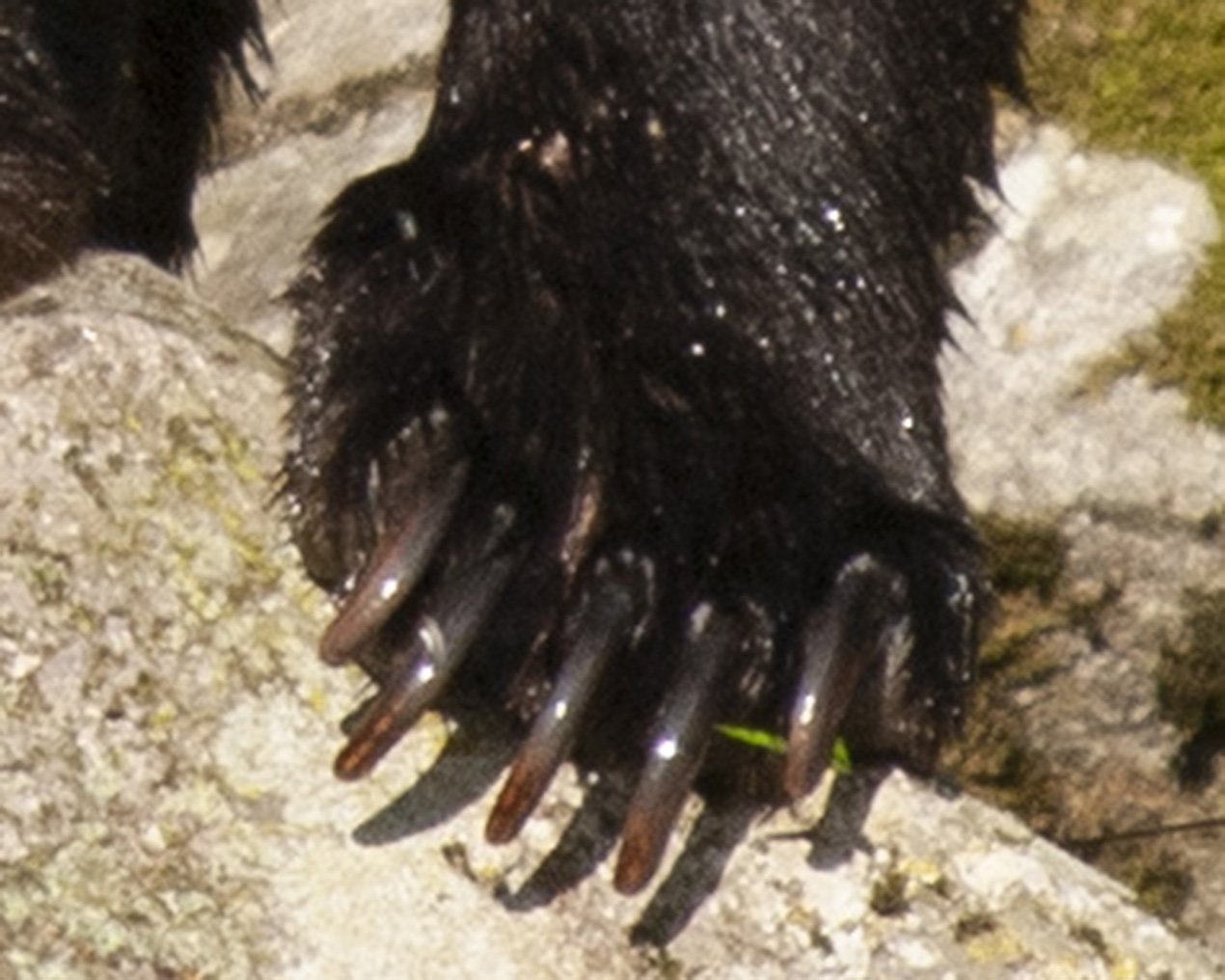
Grizzly bear claws
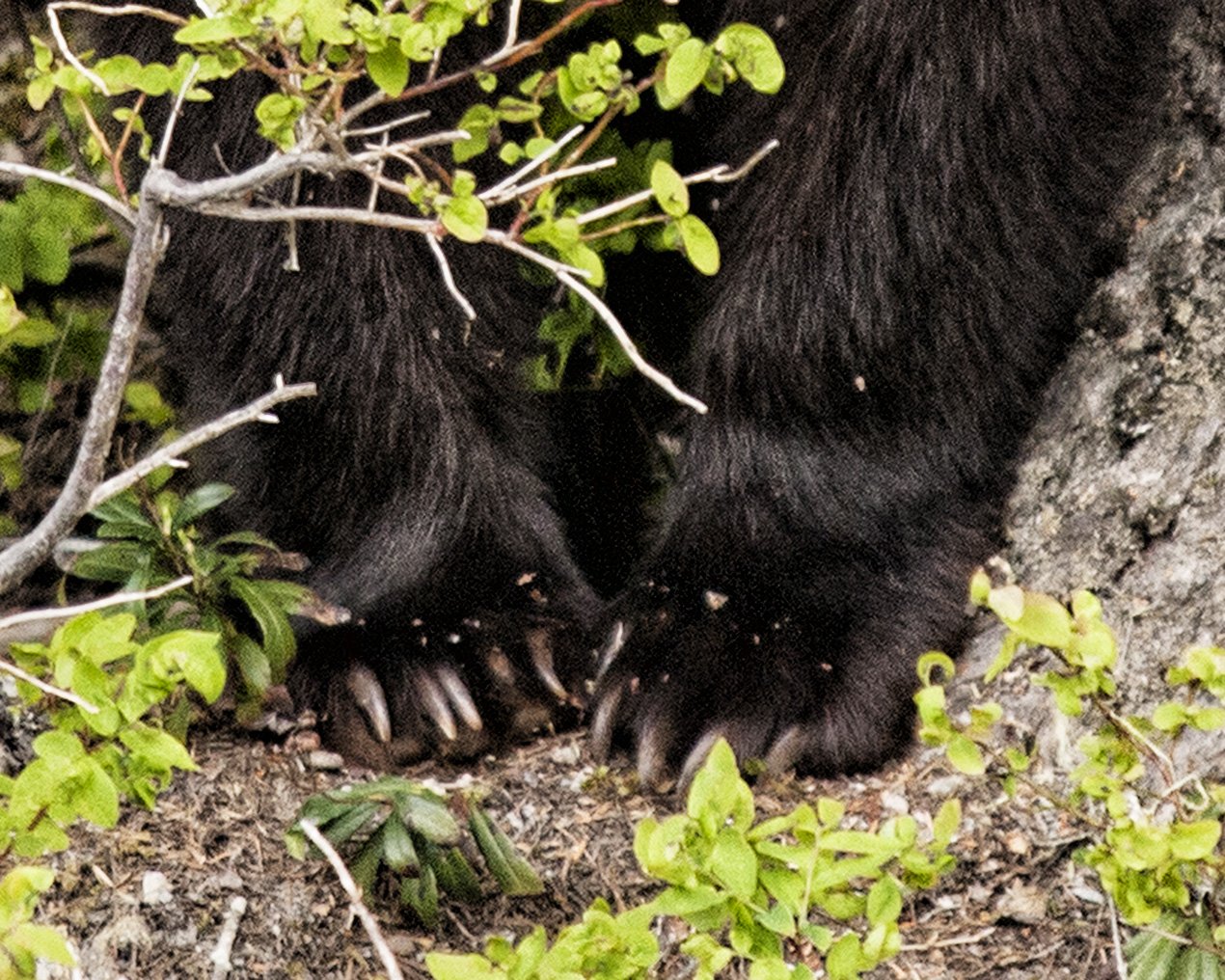
Black bear claws
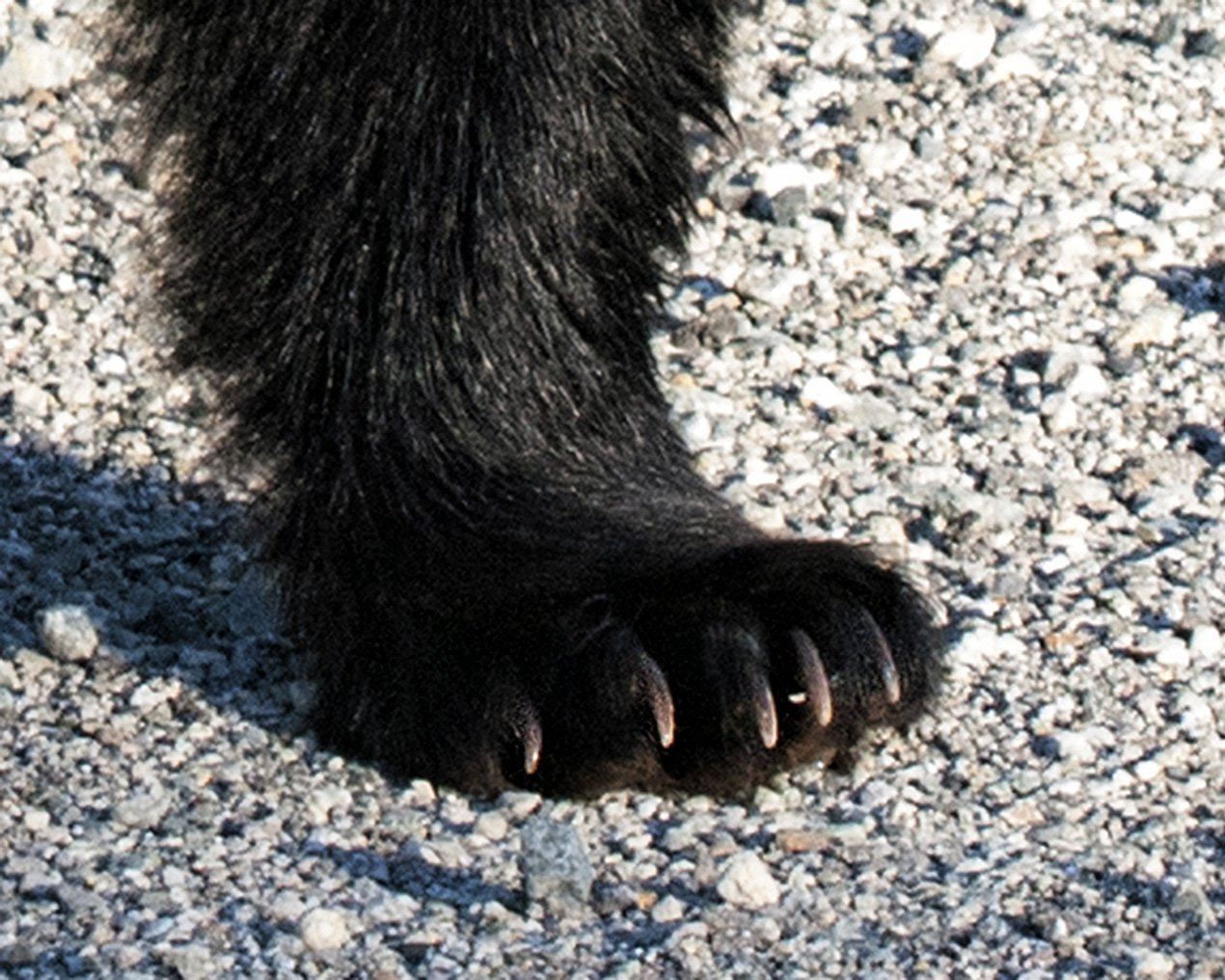
Black bear claws
Tracks
Compared to a black bear’s tracks, a grizzly’s front tracks are squarer. If you take a straight edge and hold it across the track of a grizzly front foot, just in front of the pad and behind the toe on either side, it will not cross the toe on the other side of the foot. A black bear front track is more rounded and a straight edge will cross the toe on the other side of the foot.
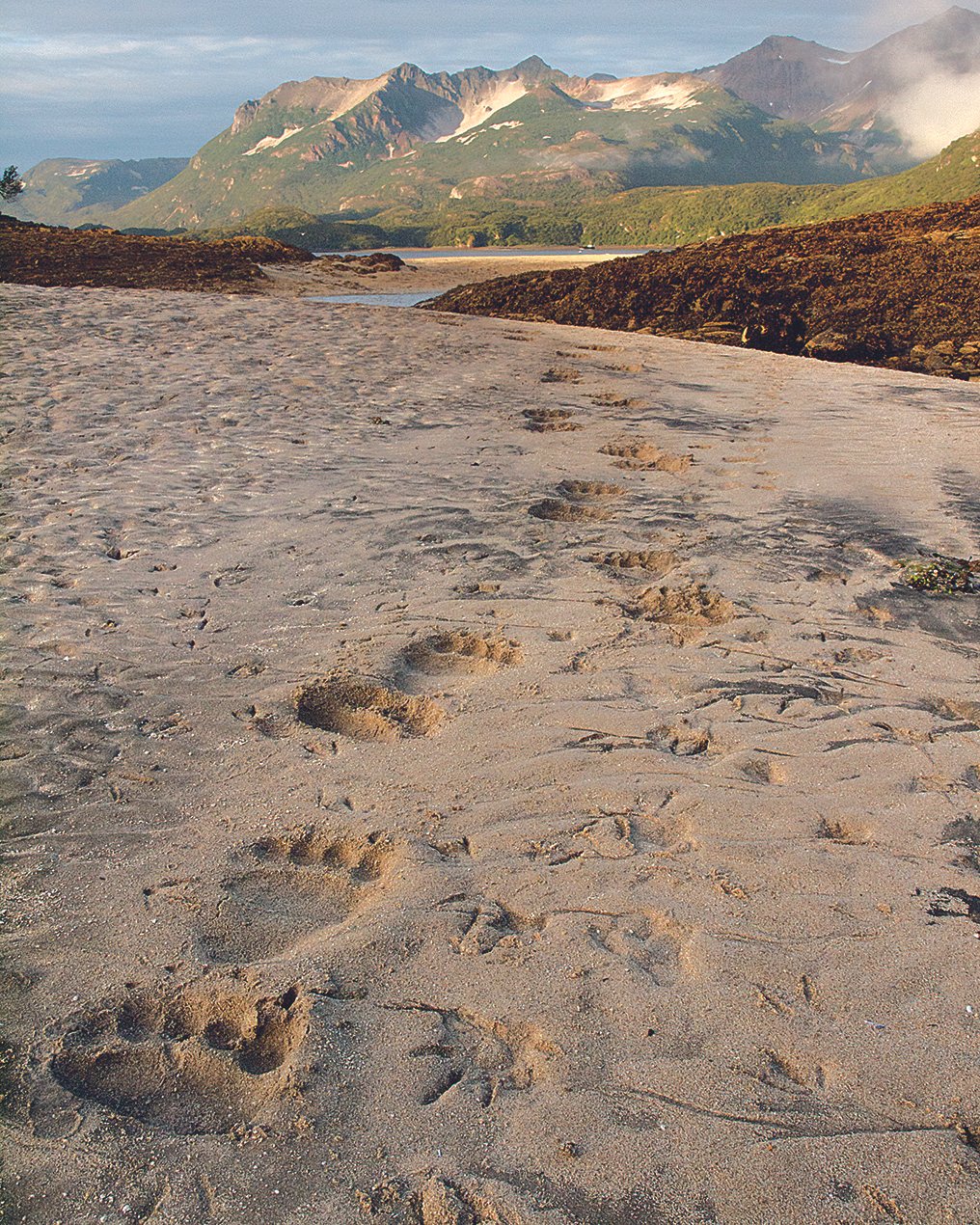
Grizzly tracks
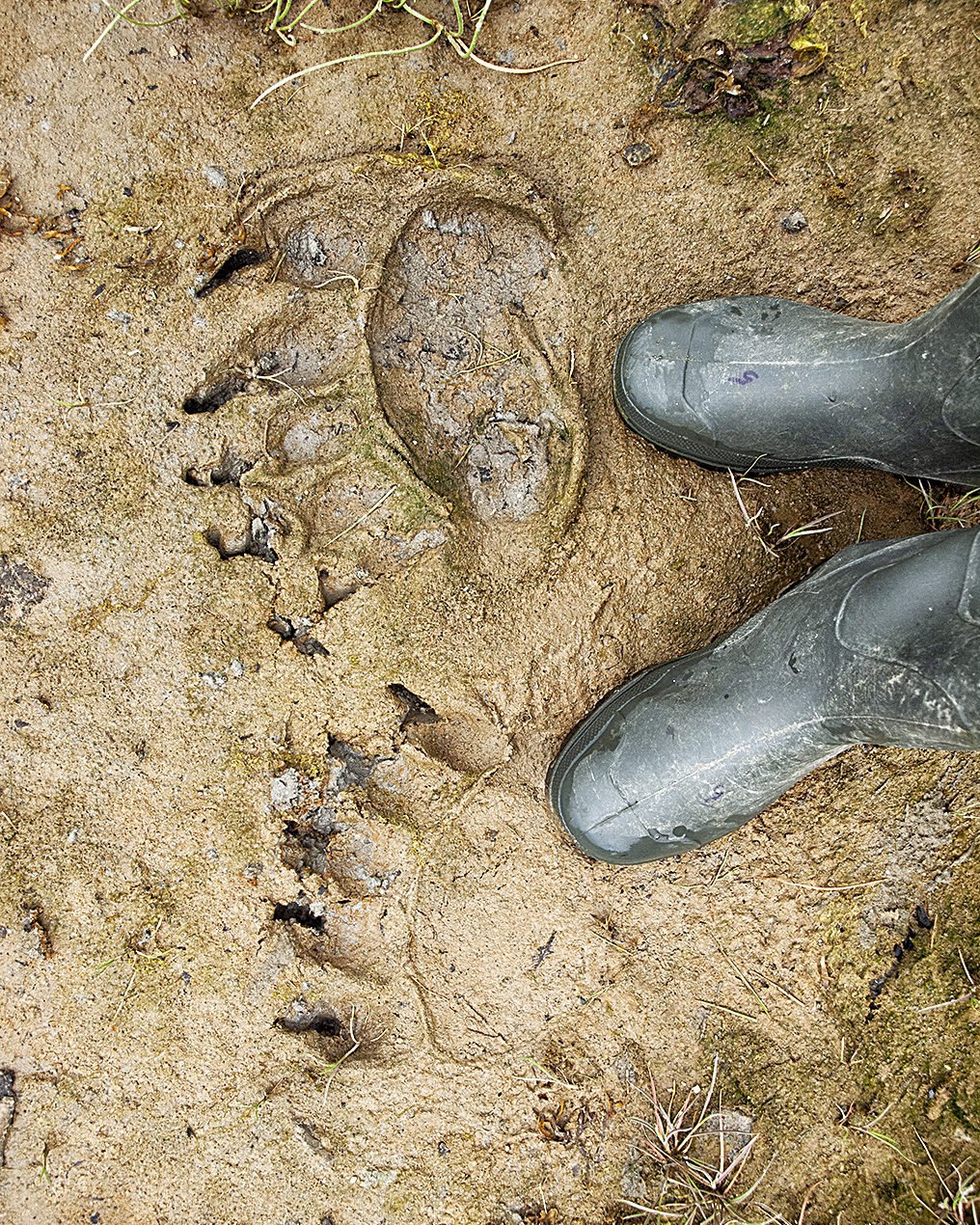
Grizzly tracks
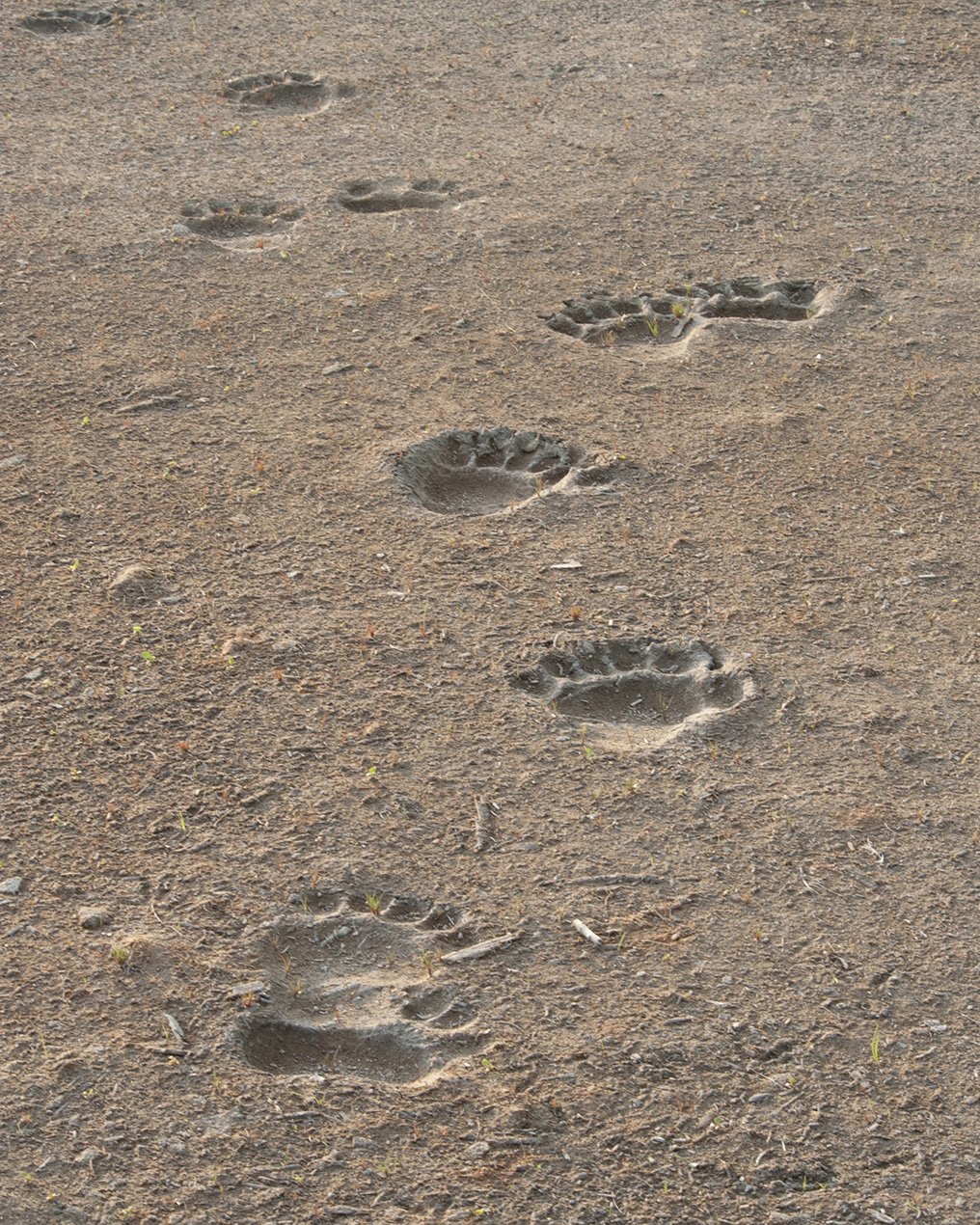
Black bear tracks
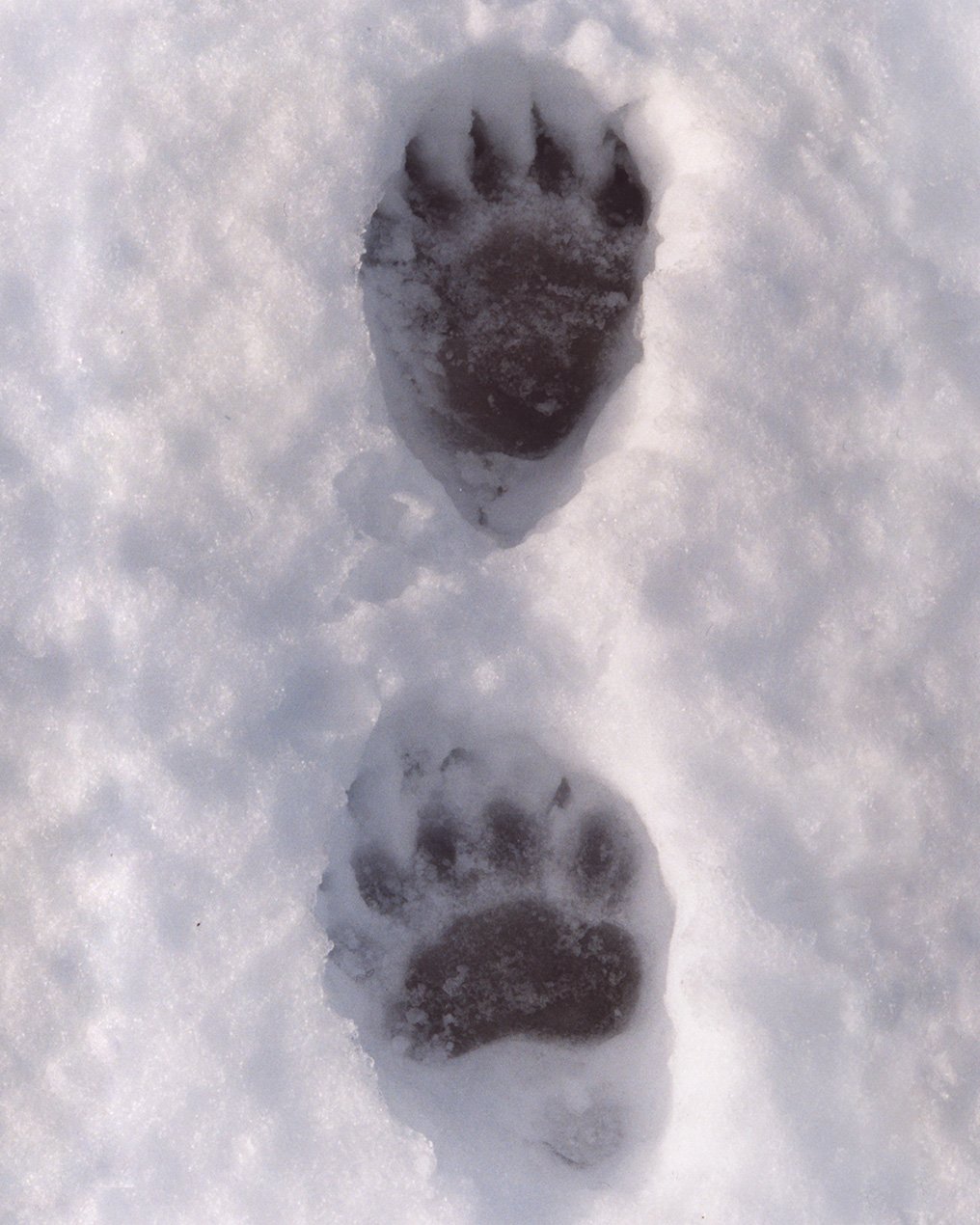
Black bear tracks
Take a quiz from Montana Fish, Wildlife, & Parks or check out these slides from the Grizzly Bear Foundation to test your skills at identifying black bears versus grizzly bears.



